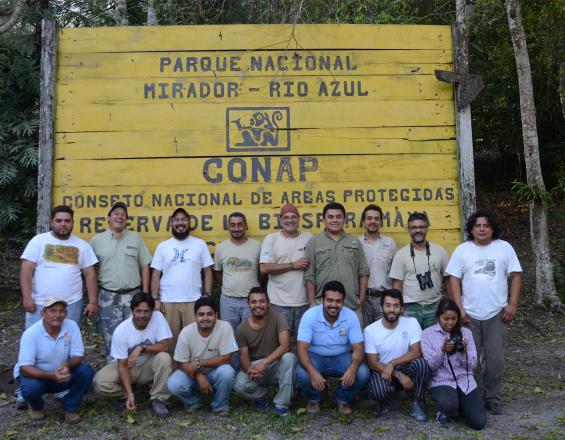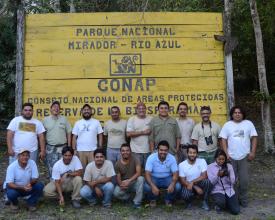
Transboundary conservation in the Selva Maya through park ranger exchanges

Through the exchange of park rangers from two natural protected areas of global importance at the border of Guatemala and Mexico, managers of these advanced in the identification of common challenges and developed joint agendas. As a result, both sides implemented concrete bi-national actions improving communication, control and surveillance strategies, reducing threats to regional biodiversity and hence elevating the transboundary protected area governance.
Context
Challenges addressed
Lack of legal framework, limited communication and collaborative safeguarding were the three major challenges. The two protected areas face the same challenges but lack the legal framework to cooperate. Efforts to protect the natural heritage and ecosystem services are parallel rather than coordinated. Hence communication is limited and resources are used inefficiently. Additionally the linear extension of the border is significant, demanding the improvement of collaborative efforts to safeguard it.
Location
Process
Summary of the process
Building Blocks
Transboundary exchange to define common activities
Enabling factors
Lesson learned
Regular review of the Annual Operative Plan (AOP)
Enabling factors
Lesson learned
Transboundary exchange workshops and training for rangers
Enabling factors
Lesson learned
Transnational institutional working group
Enabling factors
Lesson learned
Impacts
Improved coordination between the management authorities of both natural protected areas. Based on a common plan and a shared working agenda, there is more communication between local authorities that facilitates appropriate decision making and effective protection. This in turn benefits the integrity of the ecosystem and its services. Improved institutional presence and strengthened capacities within the communities along the border. Both protected areas dedicate their time and personnel more efficiently to generate environmental awareness about the importance and benefits of protecting this shared forest. Strengthened capacities of park rangers on key aspects like fire management and biodiversity monitoring. Through specific trainings and exchanges, park rangers have improved their capacities and developed common strategies to reduce impacts of illegal hunting, fires and illegal logging. A joint monitoring program for key species like jaguars, tapirs, and others has also been developed. This in turn reduces illegal activities like poaching and leads to a better understanding of the wildlife population dynamics of target species
Beneficiaries
Local communities in and around the protected areas and park rangers.

